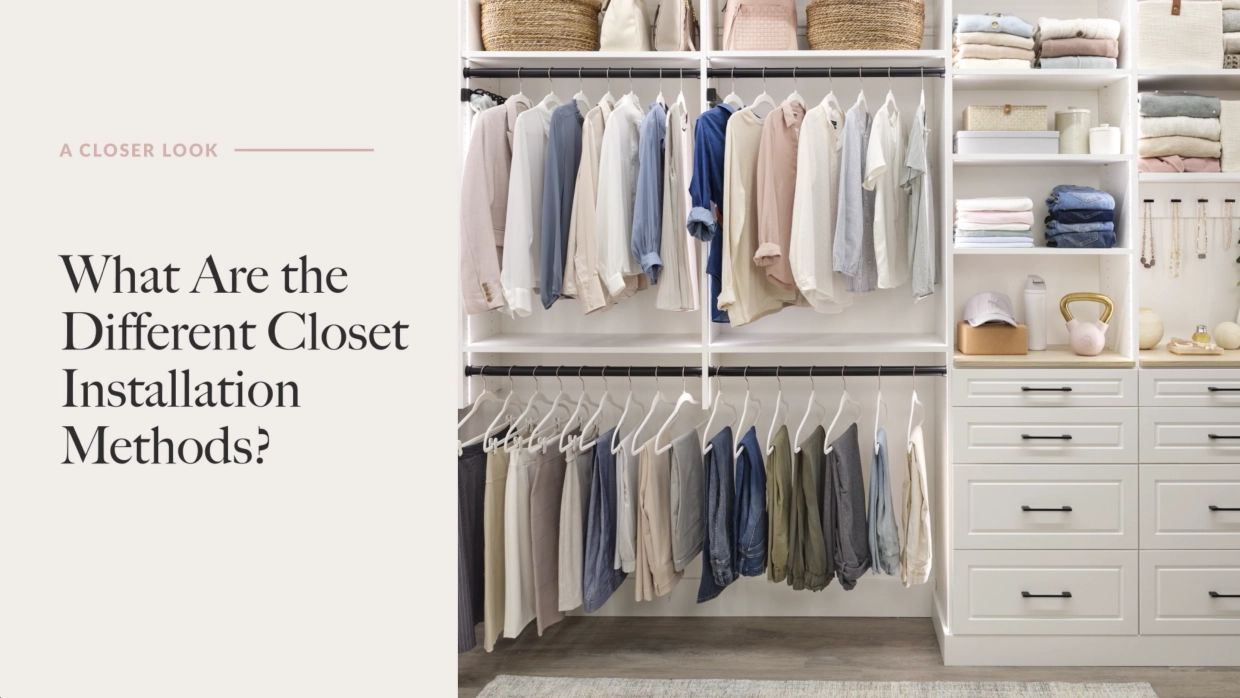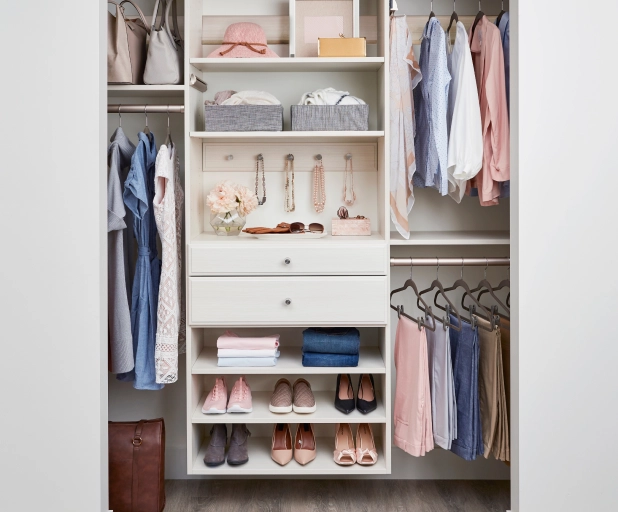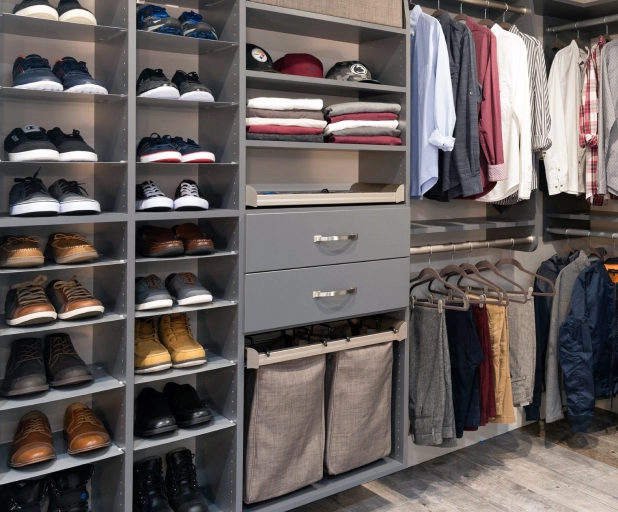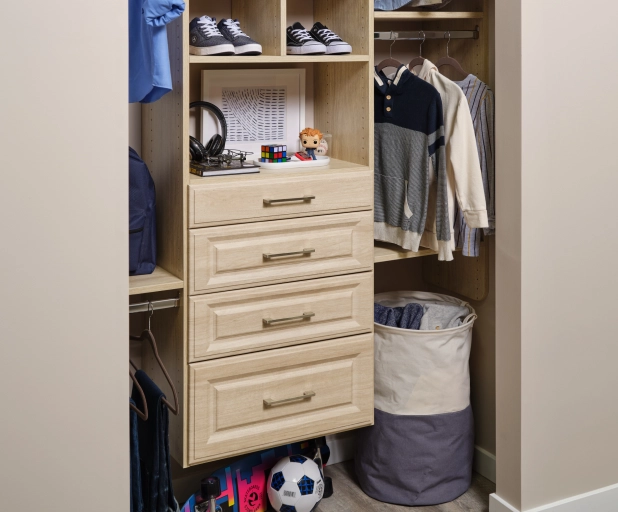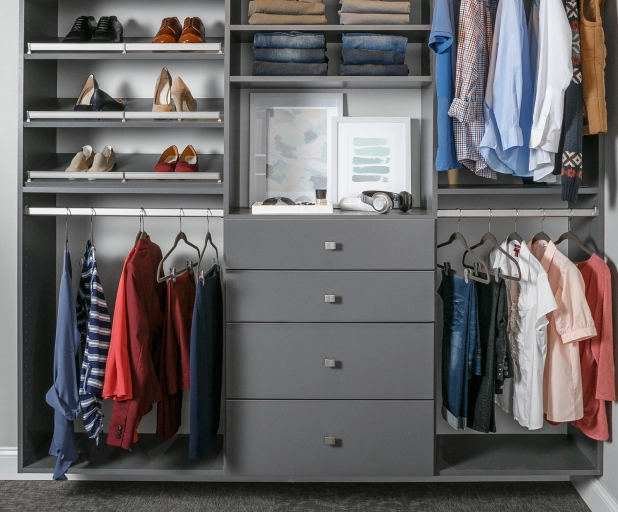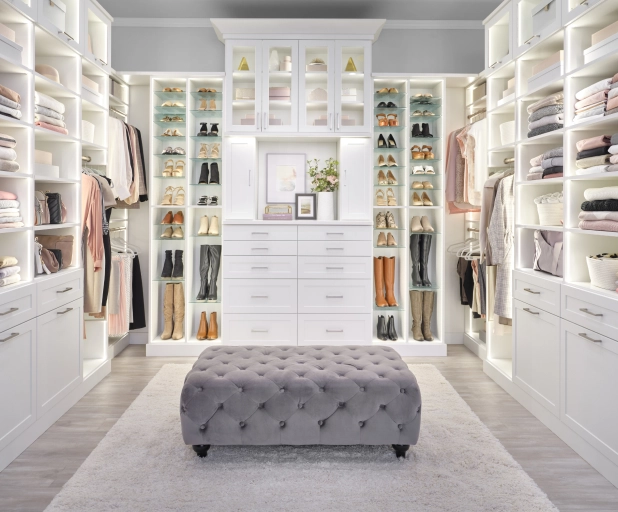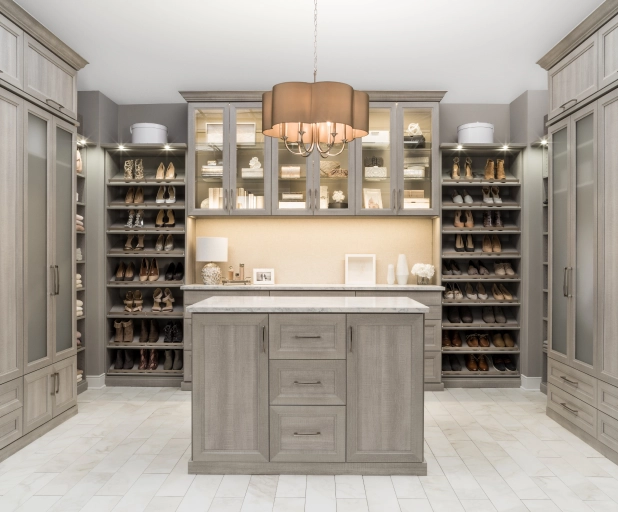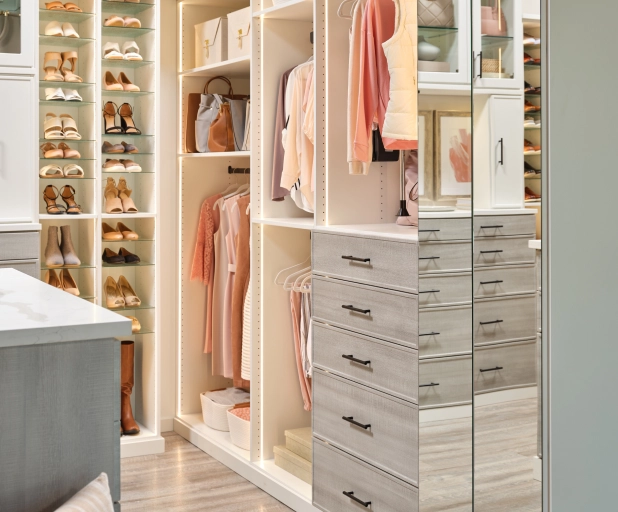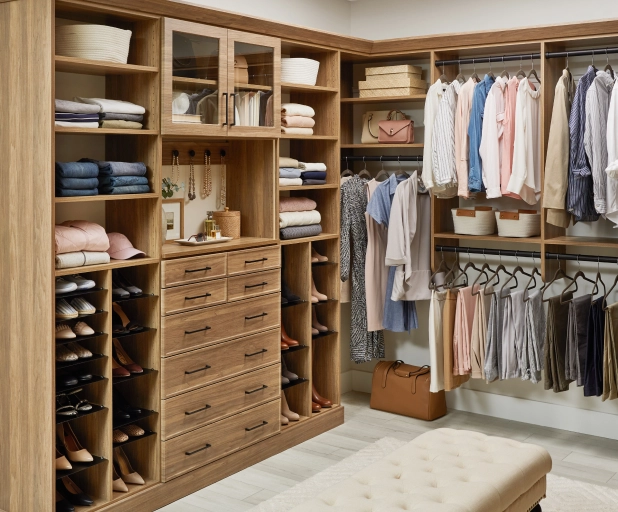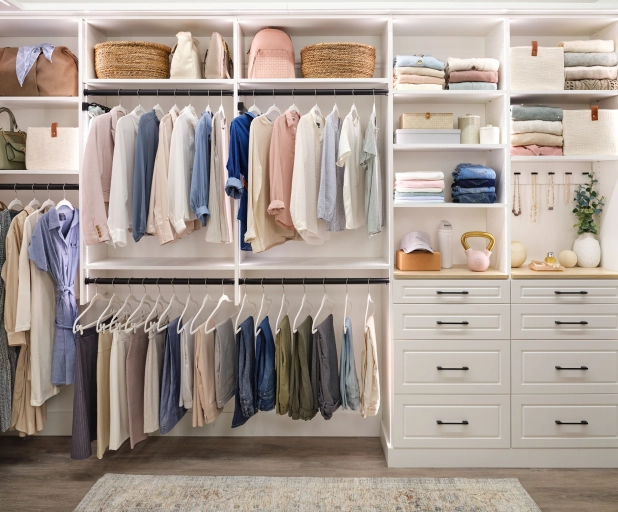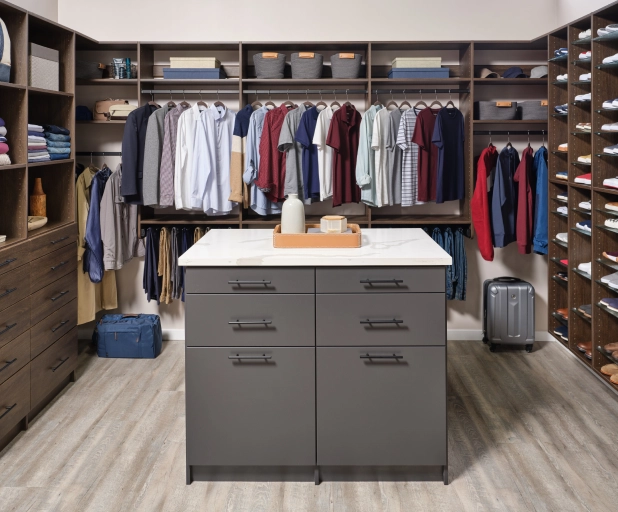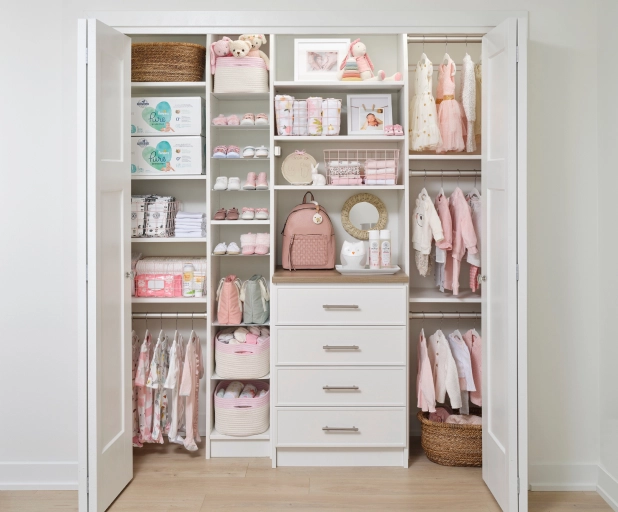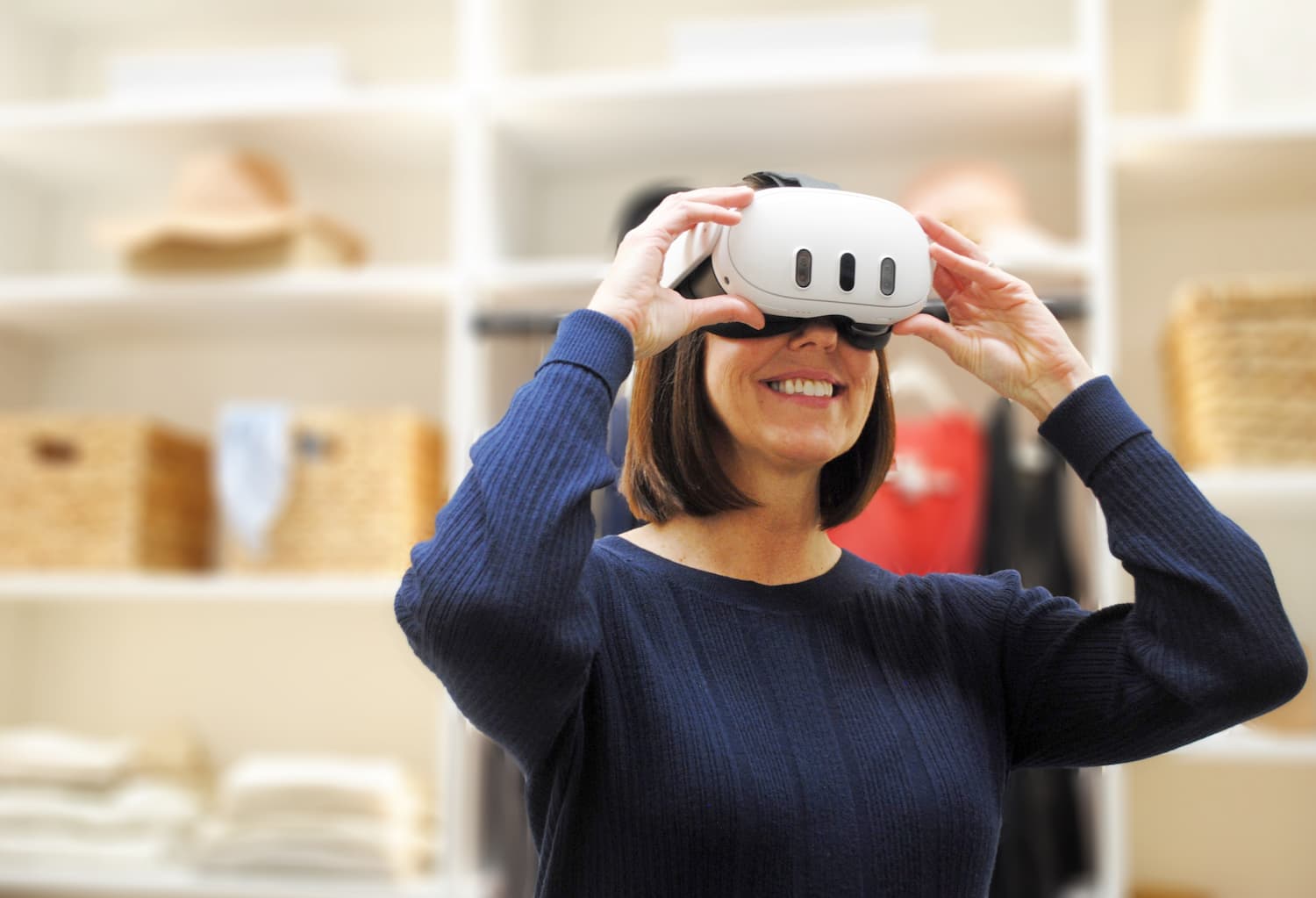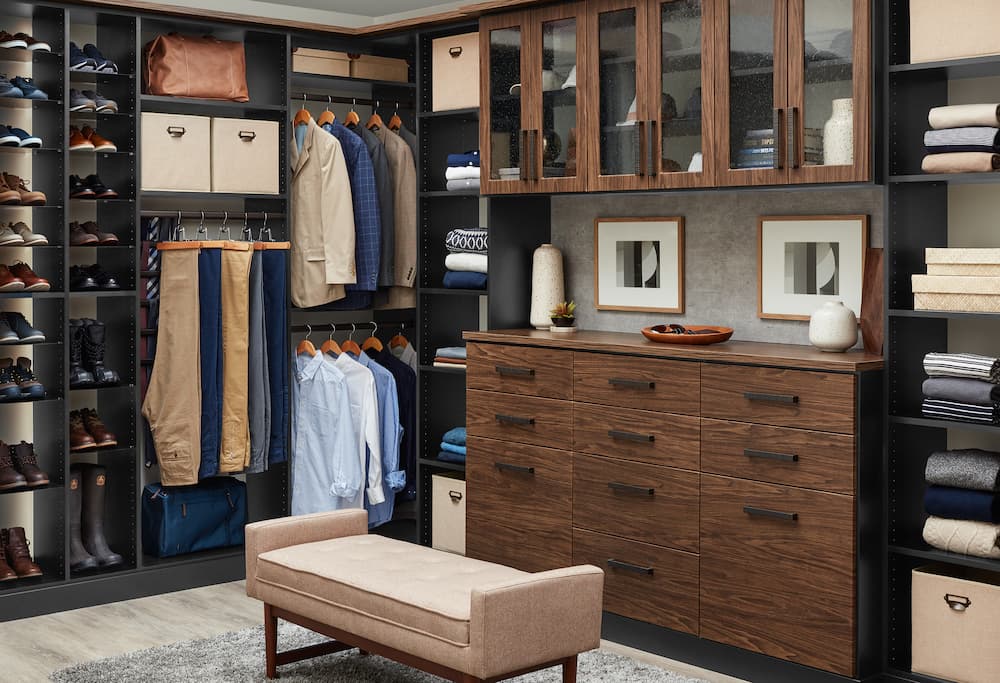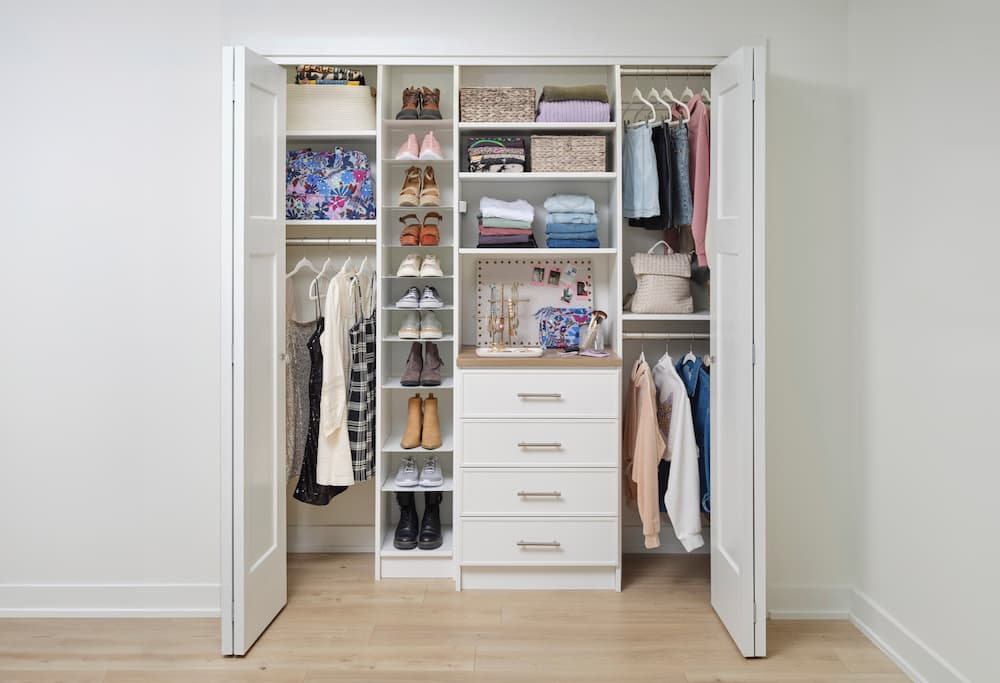
Wall-Mounted vs. Floor-Mounted Closets: What's the Difference?

Let’s face it. The closet storage solution that came with your home when you bought it probably isn’t cutting it. Whether it’s a one-size-fits-all builder-grade solution or something designed by the previous homeowner, if it wasn’t created with you in mind, then chances are it isn’t meeting your needs. A custom closet solution is intuitively designed to support your daily routine, store and make everything you need to start your day easily accessible, and blend seamlessly with the rest of the home.
Perhaps you’re at the beginning of your custom closet journey, searching online for ideas that look like your space and reflect your unique challenges. Or, maybe you’ve met with a few closet companies and you’re currently sitting with three different proposals trying to discern which is best. Either way, you’re probably asking yourself an important question: what is the difference between wall-mounted, floor-mounted, and hybrid closets?
First, let’s acknowledge that it’s great to have options so you can get the best overall storage solution for your space. However, too many options can quickly become overwhelming, rendering you “stuck”, unable to choose, and fearful of making a mistake. If you’re like most homeowners, one moment you’re leaning toward a wall-hung solution for its budget-friendly benefits, and the next you’re thinking the built-in look of a floor-mounted closet system is the way to go assuming it will have a more positive impact on resale value (spoiler alert, any custom closet addition positively impacts home value!). Choosing between wall-hung vs. floor-mounted closet systems or a hybrid solution can become even more tricky when closet designers and companies guide you to choose their preferred style.
At Inspired Closets, we want to arm you with everything you need to know about the different closet installation methods so you feel confident making the choice that’s best for you and avoid looking back on your decision with any doubts or regrets. Continue reading to learn everything you need to know about wall-mounted, floor-mounted, and hybrid closets, and to start determining which option may be best for your needs, your space, and your budget.
What Are the Different Closet Installation Methods?
Let’s go back to that initial question that often stumps homeowners. First, what exactly are wall-mounted, floor-mounted, and hybrid closets? It’s simple–each closet has a different way it can be installed in your space, and the name of each closet type reflects the method of installation. Wall-mounted closets hang from steel rails that are secured to the wall studs, floor-mounted closet systems sit on the floor and use anchors or brackets for wall support, and hybrid closets are a combination of both.
Wall-mounted
Hang from steel rails that are secured to wall studs
Floor-mounted
Sit on the floor and use anchors or brackets for wall support
Hybrid
A combination of both wall-mounted and floor-mounted
Choosing Between Wall-Mounted, Floor-Mounted, and Hybrid Closets
Onto the most important part of our question: which type of closet should you choose? When it comes to which installation method is best for your closet, there are many different factors that go into making a decision. Below is our comprehensive list of the differences between wall-hung vs. floor-mounted closet systems and what you can achieve with a hybrid storage solution to help you better understand all of your options and what will work best for you and your home.
Wall-Mounted Closets
01. Space-saving Benefits
02. Flexible
03. Extra Hanging Room
04. Cost Efficient
05. Seamless Installation
06. Easy to Clean
07. ADA Accessible
Space-Saving Benefits
Wall-mounted closets are usually the preferred choice for reach-in closets or other tight spaces that would feel overwhelming if the closet extended all the way to the floor or the ceiling. The extra floor space also leaves room to store shoes, baskets, luggage, and more.
Flexible
Hanging sections in a wall-mounted closet can be designed all the way up to the ceiling if desired, and they can be easily adjusted to accommodate changes in the future.
Extra Hanging Room
In a wall-mounted closet, there’s no need for base molding or a toe kick at the bottom. This leaves about 3-4” of additional space for longer shirts, dresses, coats, and anything else that needs a little extra hanging room.
Cost Efficient
Because they use less overall product, wall-mounted closets usually cost the least of all the installation methods.
Seamless Installation
With wall-mounted storage, there is no need to remove molding, carpeting, etc. when installing the new system. Plus, it’s easier to design around outlets, vents, and other common obstructions.
Easy to Clean
The bottom shelves of floor-mounted closet systems often become dust-catchers. Because there’s enough room for a broom, Swiffer, or vacuum to access the floor, wall-mounted closets make it easy to keep your space clean.
ADA Accessible
Wall-mounted closets leave plenty of floor space for a wheelchair to navigate and get close to hanging clothes and drawers.
Floor-Mounted Closets
01. Add Drama & Visual Interest
02. Reduce Visual Clutter
03. Store Heavy Items
04. Store Large, Bulky Items
05. Future Options
Add Drama & Visual Interest
One of the easiest ways to add drama and visual interest to your space is by opting for a floor-mounted closet system that extends from the floor to the ceiling. Because floor-mounted closet systems go all the way to the floor, crown molding, base molding and/or a toe kick are incorporated into the design, creating that built-in look and feel.
Reduce Visual Clutter
Floor-based closet systems offer a wide range of options to customize the look and functionality of the space, like doors for closed storage. You can also add mirrors to the outside of doors, giving you a built-in, full-length mirror or even a three-way mirror.
Store Heavy Items
A strong base on the ground along with wall anchors helps the structure stand up to daily wear and tear. A floor-based closet system is an ideal solution for closets that need to store heavy items like coats or a small safe, store a lot of things in general, or for clients who want to maximize every inch of space.
Store Large, Bulky Items
Floor-mounted closets can support up to 24” cabinets, drawers, and shelves whereas wall-mounted closets support up to 16”. This makes floor-mounted closet systems better suited for large folded items like extra bedding and pillows, or items that take up more space like big bags, luggage, and storage totes.
Future Options
The floor base and greater weight allowance of a floor-mounted closet system ensure you can support whatever comes your way, as well as almost any storage option, accessory, or design feature you need now, like a built-in hamper, a pull-out jewelry tray or hook board, and shoes upon shoes in one of our adjustable Shoe Shrines®.
Hybrid Closets
01. The Best of Both Worlds
02. No Wasted Space
03. Easily Adjusted
04. Budget-Friendly
The Best of Both Worlds
You can reap all of the benefits of both wall-mounted closets and floor-mounted closets with a hybrid solution that uses a different installation method from section to section according to your space, needs, and budget. For example, designers often utilize floor-mounted sections to achieve the custom built-in look by creating a bank of drawers that functions as a built-in dresser with a countertop for accessories, a mirror, décor, and more, while opting for wall-mounted sections to hang clothes where it makes sense.
No Wasted Space
The ability to mix and match installation styles captures additional space for shelves, drawers, and more that may go underutilized due to the limitations of one style or the other.
Easily Adjusted
Wardrobes continually grow and storage needs shift. A hybrid closet’s wall-mount sections are easy to alter to support your wardrobe now and well into the future.
Budget-Friendly
Because hybrid closets have wall-mounted hanging sections that require less product, they’re generally in the middle cost-wise and provide flexibility when it comes to staying within a predetermined budget.
Between wall-hung vs. floor mounted closet systems and hybrid options, there are many different ways to get the closet you need and the storage solutions you desire. At Inspired Closets, we want to eliminate the confusion, overwhelm, and potential regret that can come with making a big decision and a big investment in your home.
Our design experts will collaborate with you to align the functional needs of your closet with the aesthetic vision you have for your space, all while sticking to your budget. When these three things come together, you can feel confident about the design and installation choices that are made. At the end of the day, when it comes to wall-mounted vs. floor-mounted closets, a custom closet no matter the style will bring calm and ease to your days and make staying organized exponentially easier.
Recommended for You

Love What You See?
Our designers are great listeners, and fabulous at what they do, too, so let’s talk. Oh, the best part? Our in-home design consultations are free. Yep. FREE! Let’s get started.
"*" indicates required fields


